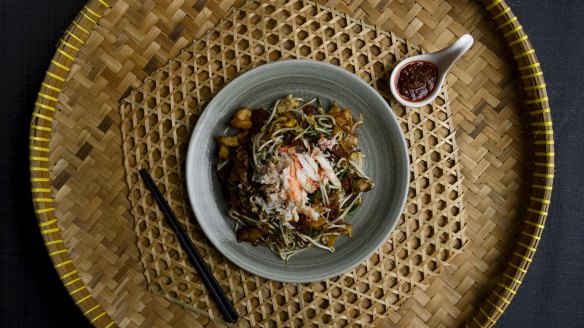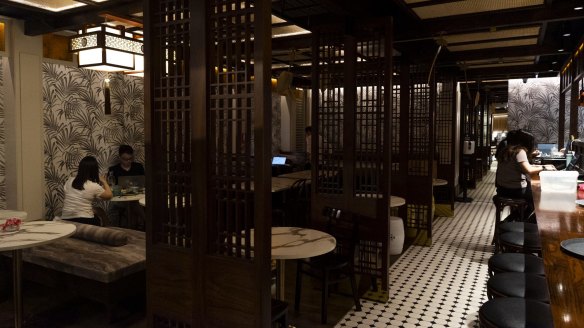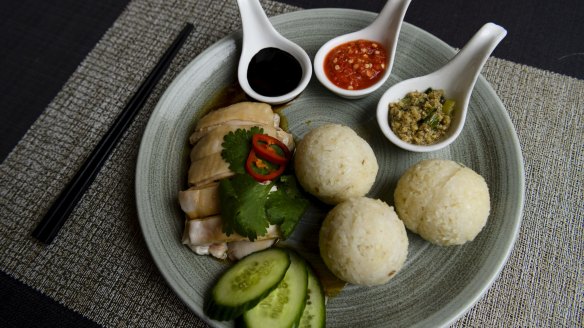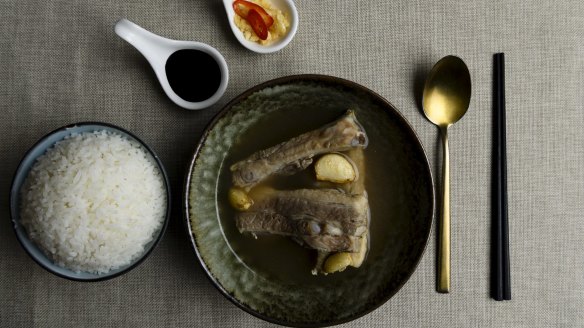This upmarket tea house offers classic Asian cooking – plus a Vegemite curry

If 2020 has taught us one thing, it's the ability to roll with the punches. Even so, Nanyang Tea Club's menu still manages to surprise. I pause, at first, at the mention of a Vegemite curry.
Then again at the seafood section, where a plate of perfectly ordinary Singapore chilli crab is pictured alongside its "cheese boba" cohort. That is to say, crustaceans tossed with bubble tea pearls.
These kind of left-field, head-turning ideas is what Billy Chong and Kaisern Ching's tea house is all about. Last year, when the longtime friends were approached to open a south-east Asian eatery in Market City's 1090 Dining Precinct, they didn't want to add "just another street food spot" on the map.

For one thing, the duo already had their own street food projects. Chong runs the popular Malaysian chain Ipoh Town, while Ching is the owner of nearby Chef's Gallery. Instead, their goal was to bring to life something that would look and feel like an upmarket tea house you would find in Singapore or Malaysia.
The restaurant's fitout, like its food, is a mix of the quirky and the familiar. "A lot of our [aesthetics] came from the Raffles Hotel in Singapore or the Eastern & Oriental Hotel in Penang," says Malaysian-born Chong. You'll see the British colonial influence in the interior: tiled floors, wooden panelling and ornate stools, with a rickshaw at the front for good measure.
Nanyang translates to the "South Sea", a coastal region that covers Singapore and Malaysia. Interestingly, it's also the grounds on which the two friends often contest the "best" version of a dish.

"We actually argued for a few months about whether we should sell the Malaysian or the Singaporean style of bak kut teh [pork ribs tea]," says Chong.
In the end, Kaisern Ching's light, peppery Singaporean version won out. The Malaysian bak kut teh is "darker, sweeter and more herbal", Chong explains. "This is why we have long arguments."
Order one, and you'll find yourself happily dissecting the pull-apart pork ribs and sipping on a fortifying bone broth. Soup takes pride of place at Nanyang. In Sydney, you won't find many other places serving "duck soup with tea tree mushroom" on a seasonal menu, at least not for $16 a pop.

A more obvious showstopper is the nasi kerabu. This colourful cousin of nasi lemak has rice that's been dyed blue by butterfly pea flower – an ingredient that's Indigenous to the kelantanese people of Malaysia. Served with a fiery sambal terasi (shrimp paste sambal), salted egg, prawn crackers and a choice of fried chicken or curry, the dish is a surprising flavour punch.
Those craving the familiar can still get a tasty char kwai teow. There's something hard to beat about wads of salty, oil-slicked noodles tossed with prawns, chives, crunchy bean sprouts and sweet clams. Amp up the dish with the addition of crab meat, though the OG version is great as is.
You'll also find small tweaks on classics, such as a quinoa nasi goreng or a tender-fleshed Hainan chicken accompanied with rice balls, rather than the usual plate of chicken rice, a variation which hails from Malacca.
Eventually, you might build up enough courage to tackle the lamb shank Vegemite curry – a dish that took some convincing for Chong's old-school, Ipoh-born chef to experiment with.
Here, the yeasty breakfast spread is added for umami, and reflects Nanyang's playful attempt to add local flavours to Malaysian dishes.
But for now, satisfied with our blue rice and the thrill of the "mildly new", we leave the Vegemite for another time. Perhaps by then one of us would even be ready to take on the cheesy, bubble tea crab.
The low-down
Nanyang Tea Club
Where: Shop 3.11/9-13 Hay Street, Haymarket
Main attraction: A south-east Asian tea house that serves everything from regional specialties, such as bak kut teh (pork ribs tea) and nasi kerabu (butterfly pea flower rice), to experimental dishes such as the lamb shank Vegemite curry.
Must-try dish: For meat eaters, any of the fortifying soup specials (think coconut chicken and duck with tea tree mushroom) or their signature Singaporean-style bak kut teh.
Insta-worthy dish: The nasi kerabu features an eye-catching mound of blue rice, surrounded by colourful sambals and a half moon of salted duck egg. A pretty sight.
Drinks: Tea $8-$12 a pot, by Ms Cattea
Prices: Snacks $5-$13, soups and bak kut teh $16-$18; mains $16-$36; signature crab dishes from $78
Hours: Mon-Sun 11.30am-8.30pm
Restaurant reviews, news and the hottest openings served to your inbox.
Sign up- More:
- Restaurant news